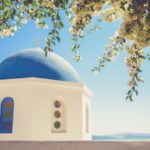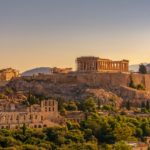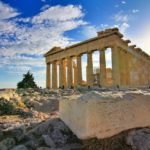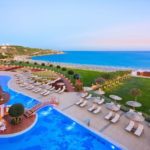Cape Sounion: A Mythical Escape from Athens
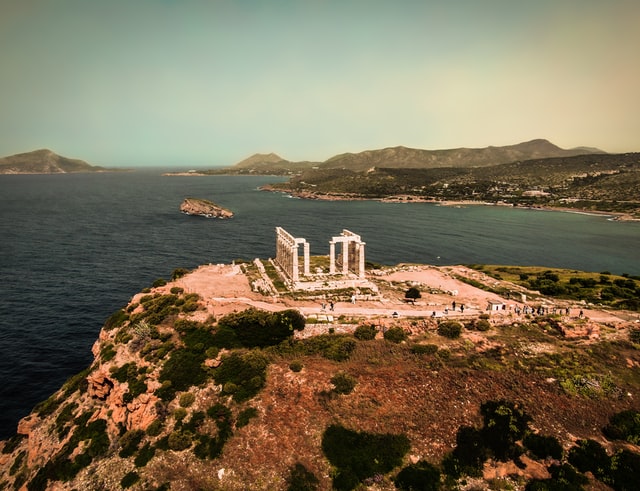
Cape Sounion was a place that had been on my travel list for a number of years. I was captivated by the photos of ancient columns combined with panoramic views of the deep blue Aegean Sea. A 69 km-scenic drive from Athens, filled with views of the gleaming Aegean Sea, swimmers, mountains and villas. Sounio is a perfect blend of mountains and sea.
In mythology, it is the place where Aegeus, the king of Athens jumped to his death in despair, believing his son, Theseus, had died in Crete. In a cruel twist of fate, Theseus, in fact, was not dead; he had just forgotten the deal made with his father prior to his travels to Crete.
Those clear blue waters of the Aegean are so bright in colour that you really do have to see it to believe it.
He had gone to Crete to fight and kill the Minotaur. His ship left with black sails, but if he was successful, he would return home with white sails. In his excitement in defeating the Minotaur, Theseus forgot to change the sails of his ship. When his father, who awaited his return on a cliff, saw the ship returning with black sails, he killed himself. The sea is named the Aegean Sea after King Aegeus.
High on the cliff today stand the ruins of the ancient temple of Poseidon, the Greek god of the sea. The temple of Poseidon was built between 444-440 BCE. It stands at about 60 metres above sea level, and like other temples, has a rectangular shape.
There were 34 columns originally, and 15 still stand today. The columns remaining are surprisingly well preserved considering the wind up on the headland and their daily exposure to the elements. Flanked on three sides by the sea, it is easy to see why this spot was an excellent vantage point for spotting incoming ships. The peninsula juts right out into the sea – and it is the last point of land a sailor can see on leaving and the first point of land visible on returning.
There’s even some modern day scribble (possibly from around 1810-11) that is said to belong to Lord Byron himself. It is believed that Lord Byron loved this area, which is evident through his reference to Cape Sounion in his poem, “The Isles of Greece.” On a visit, he carved his name on the base of one of the columns. Though it isn’t verified that it was done by Lord Byron himself, his carved name is visible on the ancient marble.
Cape Sounion: A Mythical Escape from Athens.
On my trip to Cape Sounion, there were a few tour groups present–people milling about taking photographs and learning about the history and mythology of the area. With so many others in the way, I couldn’t get a clear photo of Byron’s name. Instead, I focused on the columns and the views of the ocean as the wind ruffled my hair, cooling me after the very hot day spent in Athens.
I stood on the headland, mesmerised. The combination of the sea, the wind, the sun, and the abundance of not just history but mythology in this location make it a magical spot to just stand and absorb it all. The columns themselves contrast against the bright blue sky. They are striking from any angle. I took many photographs as I walked around the perimeter. On the side opposite the entrance, I saw beautiful winding pathways up the nearby mountain with houses dotted here and there. There are many mansions and villas close to the cape as well as farmland.
On site is a souvenir shop and a café. Yes, the coffee and snacks are expensive, like at any tourist spot, but it is amazing to sit and drink your coffee with unimpeded views of the Aegean. My coffee of choice when in Greece is a frappe, which is similar to an iced coffee. I bought my frappe and enjoyed it while looking out at the ocean. Those clear blue waters of the Aegean are so bright in colour that you really do have to see it to believe it.
Cape Sounion is a place I would certainly visit again. A relaxing drive from Athens, there is plenty of opportunity to observe the change between the city, outskirts, beaches, and then the cape itself. If you enjoy good views, archaeology, history, mythology, or just nature, this is a lovely spot with all of the above! It has mesmerised visitors from around the world–including Lord Byron himself.
Have you traveled to Cape Sounion? We’d like to hear about your adventures. Email [email protected] for details!

